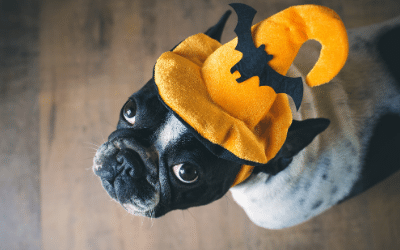Cruciate Ligament Injury in Dogs: What You Should Know
Dogs can suffer from a very painful knee injury called cruciate ligament rupture. The condition often leads to osteoarthritis. A cruciate ligament injury that isn’t treated may seem to improve after a few weeks, but surgery is almost always needed to make the knee joint stable again.
The sooner surgery is performed on a dog with cruciate ligament rupture, the better the chance of slowing arthritis progression and relieving the pet’s pain.
So as a pet owner, what should you know about cruciate ligament injury?
The Cruciate Ligaments
Pets have 2 cruciate ligaments (cranial and caudal) that hold the knee (stifle) joint together. “Cruciate” literally means to “form a cross.” The cruciate ligaments are so named because they cross inside the joint, connecting the bones above and below the knee (the femur and tibia):
- The caudal cruciate attaches to the back of the tibia.
- The cranial cruciate attaches to the front of the tibia (the side near the kneecap). Similar to the anterior cruciate ligament, or ACL, in people, the cranial cruciate ligament is the one that’s most often ruptured.
Causes of Cruciate Ligament Injury
In dogs with this injury, the cruciate ligament has often been degenerating slowly over time, and it ruptures (either partially or completely) when a dog suddenly changes direction, usually while running. Dogs can also rupture their cruciate ligaments while walking—for instance, if they trip over a rock or step into a hole.
Most affected dogs have cranial cruciate ligament disease, which results from a variety of factors that include degeneration of the ligament, obesity, age, poor physical condition, genetics, and breed.
Pets at Risk for Cruciate Ligament Injury
Cruciate ligament rupture can affect any dog, regardless of size or age. However, this type of knee injury is more common in overweight and obese dogs, and the risk of injury does increase with age.
Certain dog breeds, such as Akitas, Chesapeake Bay retrievers, golden retrievers, Labrador retrievers, mastiffs, Newfoundlands, Rottweilers, Saint Bernards, and Staffordshire terriers, are also at higher risk.
Cranial cruciate ligament injury can affect healthy dogs as well—in particular, athletes who participate in agility and other activities and “weekend warriors” who tend to be inactive most days of the week but ramp up exercise on the weekends.
Most dogs who have a cruciate ligament injury in one knee will eventually develop it in the other knee.
Cats can suffer from cruciate ligament injury as well, but it’s rare.
Signs of Cruciate Ligament Injury
Sudden lameness and pain in the hind leg are the most obvious signs. Other symptoms of a cruciate ligament injury in pets include:
- Limping
- Stiff gait
- Swelling or instability of the knee
- Lameness that comes and goes, especially with activity
- Weakness of the knee or hind limb
- Trouble bearing weight on the affected leg
- Decrease in activity level
- Difficulty getting up from a sit
- Trouble jumping up onto a sofa or bed, getting into a vehicle, or climbing stairs
- Reluctance to play
- Popping noise in the knee
Diagnosis of Cruciate Ligament Injury
Your Beach Avenue veterinarian will perform a physical exam of your pet, which includes checking for swelling, inflammation, and pain, as well as abnormal movement and range of motion of the knee. This typically involves moving your pet’s knee into several positions, as well as observing your pet walking. Your veterinarian may also need to take x-rays of the knee and may recommend other diagnostic tests.
Treatment of Cruciate Ligament Injury
Surgery is usually the most effective way to treat this type of injury. Several different types of cruciate ligament surgeries can be performed, including:
- Tibial plateau leveling osteotomy (TPLO)
- Tibial tuberosity advancement (TTA)
- Extracapsular repair (TightRope procedure)
Your Beach Avenue veterinarian will determine which type of cruciate rupture surgery will work best for your pet.
Some small dogs (and cats) may be able to recover without surgery, but only if they can be put on strict exercise restriction for about 6 weeks. This usually means being confined to a crate for rest during that time. Even then, most dogs with cruciate ligament injury eventually need surgery.
If nothing is done to stabilize the knee, the joint will start to develop degenerative changes that cannot be reversed.
After surgery, dogs must have their activity limited for about 6 to 8 weeks (possibly less, depending on which surgical technique is used). Physical therapy, which is usually part of the postsurgical plan, helps speed up recovery and reduce the chance of complications.
Prevention of Cruciate Ligament Injury
Although there’s no way to completely prevent cruciate ligament injury or disease, helping an overweight dog lose weight may reduce the risk of this type of injury. Your Beach Avenue veterinarian can create a weight loss plan that includes reducing caloric intake and increasing activity slowly and as safely as possible.
If you have questions about cruciate ligament rupture or if your pet is limping, is in pain, can’t put weight on his or her leg, or is showing other signs of a knee injury, contact us right away. The sooner we diagnose the problem, the faster we can help your pet feel better and start to recover from the injury.










